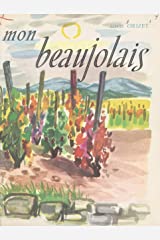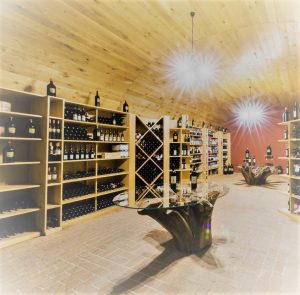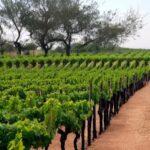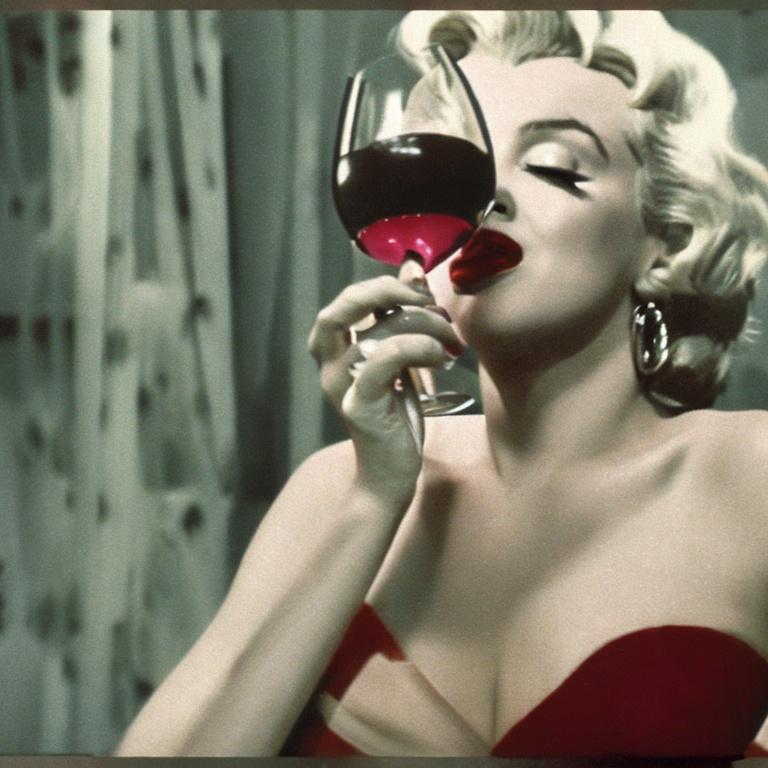Nella degustazione la regola è
“Bevete ciò che vi pare con i cibi che più vi piacciono”.
Tale è la regola essenziale del buon bere per la degustazione dei vini, forse l’unica. Quale che sia la loro bevanda preferita, i più dotti intenditori non la sconfessano.
Un francese, proprietario di vigneti di gran nome, negoziante-allevatore per tradizione che si tramanda di padre in figlio da cinque secoli, sfidò un giorno l’opinione dei suoi vicini di tavola ordinando Beaujolais con l’aringa: una recente operazione chirurgica gli vietava di bere vino bianco, ma poiché si trovava in visita in un paese di mare, non voleva privarsi del piacere di assaggiare certi ottimi piatti altrove sconosciuti.
A spregio delle prescrizioni più categoriche del codice degli accordi gastronomici, passò cosi sopra agli scrupoli e fece persino numerosi discepoli. Fatto sta che c’è pesce e pesce, direte voi. Si, certo, e c’è anche rosso e rosso. Sarebbe stato impensabile fare un tale affronto a un ampio e profondo Borgogna della Còte de Nuits, per esempio.
Per non parlare dei circoli gastronomici, da un capo all’altro del mondo non mancano i puristi del vino. È difficile tenere il conto degli ordini, associazioni e altri circoli vinicoli che nascono a ogni stagione. In Francia, ad esempio, troviamo:
- i Tastevins della Borgogna,
- i Sacavins dell’ Anjou,
- i Bretvins di Nantes,
- la ]urade di Saint-Émilion,
- i Piliers Chablisiens,
- i Chevaliers de la Méduse (Provenza) e centinaia d’altri.
In Svizzera esistono la Confrérie des Vignerons, quella del Guillon, riservata agli uomini, nel Cantone di Vaud, quella dei Vignolans nel Cantone di Neuchàtel, l’ordine della Channe nel Vallese e le numerose borghesie del vino a immagine e somiglianza delle gbilde che raggruppavano nell’XI secolo i burgenses del nord della Francia: gli statuti indicavano che il decano aveva per primo dovere quello di garantire le provviste di vino in occasione delle potationes durante le quali i borghesi si riunivano a bere.
Tutte le suddette associazioni generalmente organizzano, più volte all’anno, allegre riunioni: vini scelti, buona tavola, costumi rutilanti, atmosfera più o meno folkloristica o medievale danno pepe alla conversazione dei buontemponi che si informano reciprocamente delle cantine segrete, dei vinelli locali e delle vecchie bottiglie scovate di recente. I proprietari di vigne discutono con amore, chi della propria tenuta, chi delle sue due o tre pertiche di terra.
Gli intenditori giungono di rado a ubriacarsi, perché una delle leggi del ben bere è quella di non abusarne, ma di alleare armoniosamente i vini con i cibi e il tono della riunione. Si potrebbe dire, parafrasando il secondo aforisma di Brillat-Savarin: l’animale si disseta, l’uomo beve, solo l’uomo intelligente sa bere.
Viene lasciato a ciascuno il compito, ed è un compito nobile e appassionante, di giudicare del valore della diva bottiglia per la felicità dell’umanità.
Ignoravate di possedere in tale materia dei consiglieri privati?
Tutti li conoscono e li vedono, questi splendidi osservatori, nessuno ci pensa e la maggior parte delle persone li trascura. Perché tuttavia dovreste inchinarvi ai canoni stabiliti da illustri sconosciuti o persino da celebri personalità per decidere ciò che berrete?
Vi piace che qualcuno vi imponga ciò che dovete mangiare, tranne che si tratti di un amico di cui conoscete il buon gusto e la delicatezza nei vostri confronti? No, naturalmente.
Sicché, non c’è altra soluzione che consultare il vostro stato maggiore personale.
Riconoscere il vino dal colore
Il primo interrogato vi dice ciò che vede: una broda opaca, torbida, densa, oppure un liquido brillante, appetitoso; un bel colore dorato, giallo, ambrato, paglierino, tendente al verde, ovvero un colore smorto, lattiginoso, artificiale; un rosso franco, vivo, rubino, granata, ciliegia, oppure un liquido nerastro poco allettante.
Agitando il bicchiere appare un po’ di schiuma: bianca, indica un vino già vecchio; rossa, può contraddistinguere un vino giovane, ricco di anidride carbonica, ma forse anche gessato ( ossia con un’aggiunta di gesso per chiarificarlo e conservarlo) o acido, a meno che non provenga da ceppi cosiddetti tintori, ricchi di coloranti.
In generale, la schiuma si dissolve rapidamente.
Se persiste, il vino tradisce in tal modo la propria debolezza alcoolica.
Già il vostro primo consigliere, l’occhio, vi fa venire la voglia di saperne o no di più, In caso positivo, eccovi trasformati già in degustatori. Non temete: avete tutto ciò che occorre, gli strumenti insostituibili la cui diagnosi la gente del mestiere riconosce come di gran lunga superiore a quella di un qualsiasi laboratorio d’analisi.
Riconoscere il vino dall’odorato
Il più importante, in ordine di comparsa, è il secondo dei vostri consiglieri, il naso, o meglio una piccola placca sempre umida situata nella zona superiore del naso, vicino al cervello, dietro una fessura di un paio di millimetri di larghezza.
Attraverso tale esigua apertura, il calore della bocca, i movimenti della lingua, la respirazione e la deglutizione sospingono verso il naso l’odore che si libera dal vino e costituisce, propriamente parlando, quello che i comuni mortali intendono per gusto o sapore.
Il raffreddore, che gonfia le mucose, condanna irrimediabilmente la circolazione d’aria in tale apparato e, insieme, ogni speranza di degustazione.
Non avete notato che i cibi migliori sembrano scipiti se vi tappate le narici? Brillat-Savarin già rilevava con molta pertinenza che « l’odorato e il gusto formano un unico senso di cui la bocca è il laboratorio e il naso il camino».
Un vino si riconosce in primo luogo dall’odore: è necessario che abbia un odore oppure non è vino. Non appena prodotto fa percepire il profumo del vitigno dal quale deriva e libera inoltre un aroma secondario dovuto ai lieviti della fermentazione.
Durante l’estate che segue alla vendemmia comincia ad acquistare in botte il profumo, che dev’essere netto, vale a dire impeccabile: niente eccesso di acidità volatile ( odore d’aceto), niente cattivo sapore di zolfo, di feccia, di fusto, di legno, di muffa, di rancido o di vecchio tino.
Già in questa fase il vino si rivela comune se ha un profumo erbaceo, fine se il suo aroma ricorda l’uva. Quando alla finezza si aggiunge il carattere della denominazione d’origine, il vino possiede vigore.

Soltanto dopo l’imbottigliamento il vino sviluppa tutto il suo profumo che, lentamente, sfuma e s’intensifica. Allora un po’ alla volta fanno la loro comparsa tutti i profumi che due famosi appassionati, Louis Orizet e il suo amico Jules Chauvet, scoprivano insieme con meraviglia nei vari Beaujolais:
« Nella serie floreale: la rosa, il gelsomino, il giacinto, il lillà, il fior d’arancio, la viola, la reseda; nella serie spezie: il pepe, il sandalo, il chiodo di garofano; nella serie balsamica: la vaniglia, l’incenso; nella serie frutti: la mela, la mandorla amara, l’anice, il lampone, la caramella inglese; nella serie animale: il muschio, il fuco, l’ambra, il fungo, la selvaggina; infine, nella serie empireumatica: il caucciù, la resina, il tabacco».
Riconoscerlo dal gusto
A paragone del compito fondamentale dell’odorato, quello del vostro terzo consigliere, la lingua, appare limitato: lo sapevate che nel nostro universo esistono soltanto quattro sapori elementari? Con la punta la lingua percepisce il dolce.
Con una zona abbastanza estesa della fascia esterna, il salato. Sul taglio, se cosi possiamo dire, agisce l’acido, e infine l’amaro si manifesta allorché il sorso di liquido giunge nella parte posteriore, appena prima di essere inghiottito, anche se le suddette impressioni sono percepite per fasi successive e l’amaro può impiegare anche dieci secondi prima di farsi sentire.
Cosi, il degustatore distingue tre tempi: l’attacco, che dura soltanto due o tre secondi, l’evoluzione, durante la quale aspira e respinge il liquido sulla lingua, lo fa passare attraverso i denti e lungo il palato emettendo un piccolo e suggestivo gorgoglio, e infine il retrogusto dopo d’aver inghiottito o, più spesso, risputato.
I quattro sapori di base, tutti presenti nel vino, per quanto strano possa sembrare hanno numerose e complesse parentele.
Il sapore dolce è molto lodato o molto biasimato nei vini: è degno d’essere lodato quando rimane là dove è prodotto normalmente, Ma è fuori luogo nei vini rossi a bassa gradazione alcoolica e, quando si nasconde dietro una etichetta “Sherry pallido secco“”, ci si accorge benissimo della sua presenza.
Il sapore agro o acido, invece non solo è piacevole una volta che ci si sia abituati ma addirittura non si sarà soddisfatti se non lo si troverà. Naturalmente non intendo dire agro nel senso dell’aceto, il quale è un odore. Il sapore fruttato, fresco, aspro di un vino è uno dei suoi più importanti attributi. Di norma i sapori acido e dolce non vanno d’accordo. I vini sono di rado salati e l’amaro dovrebbe essere assente».
Infine, la sensazione di calore comunicata dall’alcool non rientra nella sfera gustativa, bensì in quella tattile. È il vostro quarto consigliere, il palato, che l’accusa con l’aiuto delle guance e della parte inferiore della lingua, per cui provate un’impressione di volume tradotta da varie espressioni colorite.
Louis Orizet vi scorge la nozione della ” forma ” del vino e riferisce che un ragazzino, cui era stato fatto assaggiare dello Champagne, aveva esclamato: « Oh, mamma, graffìa! ».
Del pari, lo sboccio in bocca di un gran vino dà un’idea di larghezza, tradotto a volte con l’espressione: « fa la ruota come il pavone».
Se l’impressione gustativa persiste, provoca quella che gli intenditori defìniscono “lunghezza in bocca”, garanzia di un vino invecchiato.
Lo stesso esperto completa spiritosamente la panoplia evocando la nozione di altezza, di slancio verso l’alto comunicato dall’emozione di una scoperta eccellente, e persino di profondità, procurata dal delizioso tuffo in un bicchiere di Borgogna d’annata.
Edoardo Kressmann notava, a ragione, che l’unico senso non sollecitato dalla degustazione è l’udito…
« Il fatto è – concludeva logicamente – che degustazione e musica sono arti complementari».
Si tratta ora di consultare la piccola squadra di esperti ai vostri ordini. Dopotutto, è per voi, e per voi soltanto, che i professionisti si danno tanto da fare.
Se il loro giudizio è in via di principio più severo del vostro, è perché non possono permettersi errori nei vostri confronti, e meno ancora truffe.
Ma, pur senza volerne prendere il posto, la vostra decisione è inappellabile.
Tale certezza non vi incoraggia a occuparvene? Il vostro punto di vista prenderà a prestito qualcosa da quello del commerciante: questo vino giustifica il denaro che spendo? Inoltre, se non vi preoccupate, recitando la parte dell’enologo, di stabilire un’equivalenza tra la sua composizione e il suo sapore, dovrete comunque decidere se fa al caso vostro e tentare di sapere perché, per poter cercare in seguito qualità similari. Se al contrario lo trovate cattivo, non sarà inutile scoprirne i difetti per poter trattare da pari a pari con il vostro fornitore. Oltre all’aspetto pratico del problema, avete mai pensato al lato pittoresco dell’avventura?

Come faceva notare un intenditore illuminato del Sud-Africa, Godfrey de Bruyn,
« è un’esperienza interessante e piacevole che non richiede né cognizioni tecniche, né sforzi particolari. I degustatori dilettanti hanno bisogno di un secchio, di una brocca d’acqua, di un po’ di carta e qualche matita, di bicchieri, di un pezzo di formaggio, dei vini da degustare e di alcuni amici che possano interessarsi al vino. La scelta dei vini in vista di una degustazione è questione di preferenze, ma è buona regola limitare la degustazione a un unico tipo di vino, per esempio Xeres, Porto o vini da pasto bianchi secchi ».
Come si riconosce un buon degustatore di vino?
Un buon degustatore di vaglia riesce a definire un vino nel giro di un quarto d’ora e con una trentina di parole, e a ripetere l’impresa, facilmente e correttamente, fino a una trentina di volte di seguito. Tale attitudine, naturalmente, presuppone un allenamento quotidiano di anni, che si perde nel giro di una settimana. Non a tutti si richiede tanto, ma chiunque può esprimere perfettamente un’opinione personale valida in funzione della propria innata sensibilità e della propria attenzione.
Una volta riconosciute e commisurate le doti, lo specialista si esercita ad assaggiare vini modificati fino a riconoscere l’influenza, anche indiretta, dei loro componenti. A ogni nuova degustazione, si sforza di descrivere ciò che vede e ciò che beve con il massimo dei termini.
A questo punto interviene la ben nota nomenclatura sulla quale gli uni sospirano scoraggiati e che altri considerano con un sorrisetto un tantino ironico. Non appena ci si eserciti un po’, le poche dozzine di aggettivi si rivelano presto necessari e rappresentano, in mancanza di un degustatore elettronico, una sorta di codice abbreviato di definizione. In effetti, ogni zona ne impiega correttamente solo cinque o sei, che però differiscono da una zona all’altra.
Come si valuta il vino?
Tutte le valutazioni prendono le mosse attualmente dalla nozione di armonia:
“un vino di buona qualità richiede un equilibrio ragionevole tra due elementi, alcool e zucchero da un lato, acidi e tannino dall’altro”
Al fine di avere una base chiara, gli enologi calcolano in cifre tale nozione, chiamata indice di morbidezza; sottraggono il valore dell’acidità totale complessiva e del tannino espresso in grammi dal tenore alcoolico espresso in gradi. Il risultato generalmente si aggira sul cinque per un vino detto “ben equilibrato”. Dal cinque in su il vino si fa più acido, dal cinque in giù più dolce.

Un’autorità in materia, il professor Peynaud, esperto di fama internazionale e direttore della stazione enologica di Bordeaux, ha compilato due tabelle di gradazione destinate ai vinai, cantinieri, enologi e controllori che hanno occasione di seguire le sue lezioni: in primo luogo, a seconda della gradazione alcoolica, un vino giudicato equilibrato può essere, in ordine crescente: fresco (eventualmente piccolo, debole, leggero e, in senso negativo, piatto, slavato, acquoso), poi povero, quindi, dai 12 gradi in su, vinoso, caldo ( da 13 ,5 a 14 gradi), generoso, spiritoso e, in senso peggiorativo, alcoolico. Nell’ultimo caso, una buona acidità lo rende “nervoso”.
In secondo luogo, in relazione alla ricchezza di componenti – vale a dire estratti secchi ( tutto ciò che resta facendo evaporare il vino) – un vino equilibrato sarà tenue, scorrevole, vellutato, tenero, sciolto, liscio, rotondo, maturo, pieno, carnoso, grasso; in pari tempo per guanto riguarda la gamma zuccherina, apparirà morbido, glicerinato, molle, e persino salato o alcalino, quest’ultimo aggettivo inteso a indicare molto debole (2,5). Magro, vuoto, mordente, crudo, duro, acido, verde, indicano i vari stadi dell’acidità complessiva.
In funzione dell’acidità volatile il vino sembrerà caldo, avrà “il piccante”, sarà inacidito, acre e persino ardente se in pari tempo ha molto alcool. Infine, la scala dell’amaro andrà da duro ad astringente passando per fermo, aspro, amaro. Questo, per quanto riguarda l’equilibrio.
Le suddette valutazioni costituiscono soltanto un preludio all’esame dei criteri di qualità e di originalità di un vino i quali sono, naturalmente divisibili all’infinito.
Non solo la nomenclatura varia in funzione dell’esperienza e della fantasia di ciascuno, ma in questa materia la soggettività è tale, che un ospite accorto può quasi riuscire a far dire a un degustatore ciò che vuole.
Per il gioco dei contrasti, e secondo l’ordine nel quale i vini si presentano, risentono più o meno di tale caratteristica. L’accumulo delle sensazioni e anche dell’alcool che, pur senza bere, si infiltra nelle mucose in ragione di due centimetri cubici circa per degustazione, affaticano un po’ alla volta gli organi. L’abitudine a un vino conosciuto comporta una relativa insensibilizzazione.
L’ambiente ha notevole influenza: un vino sembrerà diverso a seconda che lo assaggiate da soli o quasi in una cantina fresca, oppure in allegra compagnia a una tavola elegante; il vino spillato dalla botte con la cannella sembrerà altra cosa se vi sarà offerto in un bicchiere di cristallo.
Infine, un peso essenziale hanno l’ora e la vostra forma, nonché l’intensità del vostro appetito.
Per tenere nel debito conto tutti questi elementi imponderabili, conviene innanzitutto fare le cose con calma.
Dedicategli, dunque, tutto il tempo che si merita. Scegliete l’ora migliore della giornata, quella in cui le papille gustative ben riposate sono pronte al compito che le attende, nella tarda mattinata o nel tardo pomeriggio.
Durante il pasto le facoltà gustative diminuiscono, e la digestione, verso le tre o le quattro del pomeriggio, toglie qualsiasi sensibilità: è il momento peggiore.
Assegnerete un voto al vino come fa un insegnante con un tema dopo una notte insonne passata a correggere. Assaggiate di preferenza vini diversi da quelli che vi sono troppo familiari. Non degustatene molti di fila: vi sembreranno sempre più duri e acidi.
Un vino rosso, dopo un bianco, sembra più tannico, uno secco, dopo uno abboccato, appare più secco ancora e più acido: l’ordine

auspicabile è perciò rosso, quindi rosato, poi bianco e infine bianco liquoroso. Questo riguarda la degustazione, non un pasto, quando è usanza di bere bianco con i primi, poi rosso con la carne e formaggi, infine vini amabili se è il caso, al dessert.
Infine, dimenticate l’ambiente che vi circonda, il quale dovrà essere il più possibile neutro.
Le sale di degustazione presso le grandi case produttrici, di Champagne per esempio, somigliano a laboratori: pareti bianche, piastrelle di maiolica bianche, bicchieri fini di dimensioni medie, tutti identici e muniti di stelo per non comunicare al calice il calore della mano e per consentire di agitare comodamente il vino, di farlo “dondolare”, girare nel bicchiere.
Assaggiamo il vino
La scelta si profila spesso già all’attacco, dopo che ci si sia preventivamente “vinati” la bocca con un sorso “sciacquante”. A questo primo contatto, tutti i difetti e le qualità del vino balzano letteralmente e in blocco alla gola. Dopodiché, sorbite il vino accuratamente e attentamente a piccoli sorsi, uno, due, tre, quattro, cinque, sei, sette, otto, nove, dieci, e risputate: il vino rivela cosi il suo retrogusto.
Si ricomincia da capo, si mangia un boccone di pane o di formaggio o ci si sciacqua la gola con acqua fresca, si ricomincia ancora finché lo si giudica opportuno. Se ne parla con i compagni: l’appassionante raffronto dei giudizi consente un po’ alla volta di farsi un’opinione precisa e misurata.
Per scartare le false impressioni, gli specialisti inglesi seguono spesso un metodo detto triangolare, allorché vogliono stabilire se tra due vini esiste realmente una differenza: il vino A è versato in due bicchieri, il vino B in altri due, e il degustatore assaggia per serie di tre bicchieri le otto combinazioni possibili: A, B, B; B, A, B; B, A, A, ecc. Beninteso in un ordine che egli ignora. Se a ogni serie scopre l’ordine esatto, la differenza è innegabile.
Una simile ripetizione, tuttavia, diminuisce nettamente la sensibilità del degustatore, il quale percepisce ormai soltanto una differenza, magari tripla o quadrupla, rispetto a quella che aveva avvertito al primo assaggio. Di regola è più sbrigativo limitarsi a classificare per ordine di eccellenza i bicchieri numerati in anticipo e ripetere l’operazione più volte. Il professore Peynaud consiglia, in presenza di più di sei campioni, di assegnar loro un voto una volta per tutte, da O a 20, dall’imbevibile al sublime (raro, ma esiste), passando per il cattivo, l’insufficiente, il sufficiente, il discreto con qualche imperfezione, il buono; l’assegnazione di due o tre voti possibili a ogni fase consente di classificare i vini che meritano una votazione suppergiù uguale. Infine i vini si trovano divisi in varie categorie.
Esempi di assaggio e degustazione del vino
Ecco qui di seguito alcuni estratti di una degustazione commentata dal succitato professor Peynaud presso la stazione enologica di Bordeaux.
Clairet Alcool: 12,2°
Acidità totale: 3,80
Acidità volatile: 0,42
Tannino: 0,8 g.
« Liscio. Rotondo senza essere carnoso. Leggero di corpo. Ben equilibrato.
Finale gradevole. Sapore. Un po’ di anidride carbonica (scuotere la bottiglia, si libera sotto il pollice). Ottimo vino tipo Clairet. Ben rappresentativo. Diverso dal rosato. Qualità media equivalente al Bordeaux superiore.
Vitigno della zona: non médoc né saint-émilion. Ottimo voto per un Clairet: 15 su 20.
Provenienza: una cantina sociale che ha trattato i primi ceppi arrivati: malbec e merlot. Con dei cabernet si avrebbe un vino meno fluido, meno leggero, meno liscio. »
Pauillac 1959
Alcool: 12,6°
Acidità totale: 4 ,21
Acidità volatile: 0,75
Tannino: 2,28 g.
« Profumo intenso, molto ricco e complesso. Tannino nobile. Vino molto maturo. Più vinoso e nervoso degli altri. Finale più fermo. Acidità volatile un po’ eccessiva che gli impedisce di essere più grasso. Ma rotondo, pieno, robusto, di corpo, ottimo tannino che garantisce grande longevità. L’acidità volatile è un difetto minimo perché per il resto è ottimo. Un po’ asciutto ma non secco. Non sarà mai più morbido.
Finale tannico ma tannino nobile, saporoso, non duro, né sgradevole, né difficile da sopportare. Molto sapore e personalità che assorbe i difetti. Eccellente Pauillac generico. Già vecchio, ma raggiungerà l’apice fra dieci anni. Ad onta del lieve eccesso di acidità volatile, il vino “dev’essere sensazionale a tavola”. Vitigni: tre quarti cabernet-sauvignon, il resto malbec e merlot. »
Graves 1962 ( Imbottigliamento luglio-agosto 1964) Alcool: 12,7°
Acidità totale: 3 ,80
Acidità volatile: 0,30
Tannino: 2,0 g.
« Ancora in periodo critico: meno d’un anno di imbottigliamento. Conservato in tino Cimar. Sa di uva di buon vitigno. Molto netto, molto fresco. Di corpo, robusto, vinoso, nervoso. L’insieme, acidità + alcool, dà nerbo. Manca di scioltezza. Molto sapore. Finale piii amaro che astringente, segno di longevità. Buon vino di Graves abbastanza tipico (sono vari). Ha bisogno di invecchiare. »
In ciascun caso sono misurate alcune caratteristiche: tenore alcoolico, acidità, indice tannico. Riempite i bicchieri e concentratevi. Vino in bocca con il professore: annusate, agitate il bicchiere, annusate ancora, avanti, fate gorgogliare il vino in bocca, raccoglietevi.
Avete assistito a una seduta di degustazione analitica o, se preferite, organolettica. Inoltre, al dilettante generalmente fanno difetto le misure di laboratorio. Comunque, vi siete in tal modo fatti un’idea di tutto ciò che può condizionare la vostra scelta e potete ora dedicarvi alla ricerca delle caratteristiche concrete.
Preparare l’ambiente alla degustazione del vino
Stasera, volete, per una volta, offrirvi qualcosa di speciale e vedere la vostra tavola nobilitata da una buona bottiglia? Innanzitutto, pensateci un po’ prima del momento di stapparla, se possibile la vigilia. Un gran vino che accompagni un piatto raffinato è un’esperienza il cui ricordo permane a lungo: presuppone gusto, spese, tempo, cure, fortuna e un ambiente adatto. Non si hanno spesso i mezzi per permettersi un lusso del genere. Per una specie di compensazione, per degustare appieno un vino ben scelto e creare un’atmosfera calda, feconda, lieta, non occorre una lista di cibi che ricordi le corti regali e principesche del “secolo dei lumi”.
Una portata di carne alla griglia o arrosto di buona qualità, seguita da buoni formaggi maturati al punto giusto, accompagna a meraviglia i grandi vini rossi. Crostacei, ostriche e pesce fresco richiedono i bianchi secchi o fruttati, mentre le carni bianche, i pesci in guazzetto e gli entremets cremosi si accordano con i bianchi cosiddetti da seconde mense, vale a dire amabili.
Questi principi, li conoscete di certo; teneteli presenti per non recare gratuita offesa al vostro acquisto di gala.
Per cominciare, potrete acquistare un vino che qualche amico intenditore vi ha raccomandato e farete una specie di media tra i vostri ricordi, le affermazioni del commerciante e l’aspetto della bottiglia. Se il contenuto risponde all’attesa, tornerete ad acquistarlo e, reiterando i tentativi, finirete per scoprire l’indirizzo del produttore. Scrivetegli. Da una semplice lettera di ordinazione, la vostra corrispondenza non tarderà a diventare più circostanziata.
Comprate una o due casse di dodici o venticinque bottiglie· o una piccola botte, riuscirete a fare la conoscenza del fornitore, e un po’ alla volta andrete a trovarlo di tanto in tanto per commentare ciò che vi fornisce e assaggiare altri vini. Visiterete la sua cantina e, col gomito appoggiato su una cassa o un barile, esplorerete a una a una le ricchezze che svela soltanto agli iniziati. Cosi penetrerete piacevolmente nella vita del vino.
Chi lo fa, non conosce maggior piacere che parlarne, che accogliere nuovi adepti del culto dei vini. Ne trarranno vantaggio indubbiamente la vostra salute, il vostro buonumore e l’atmosfera familiare, e finirete per chiedervi come abbiate mai potuto fare a meno di quell’amico di tutti i giorni che è il vino.





